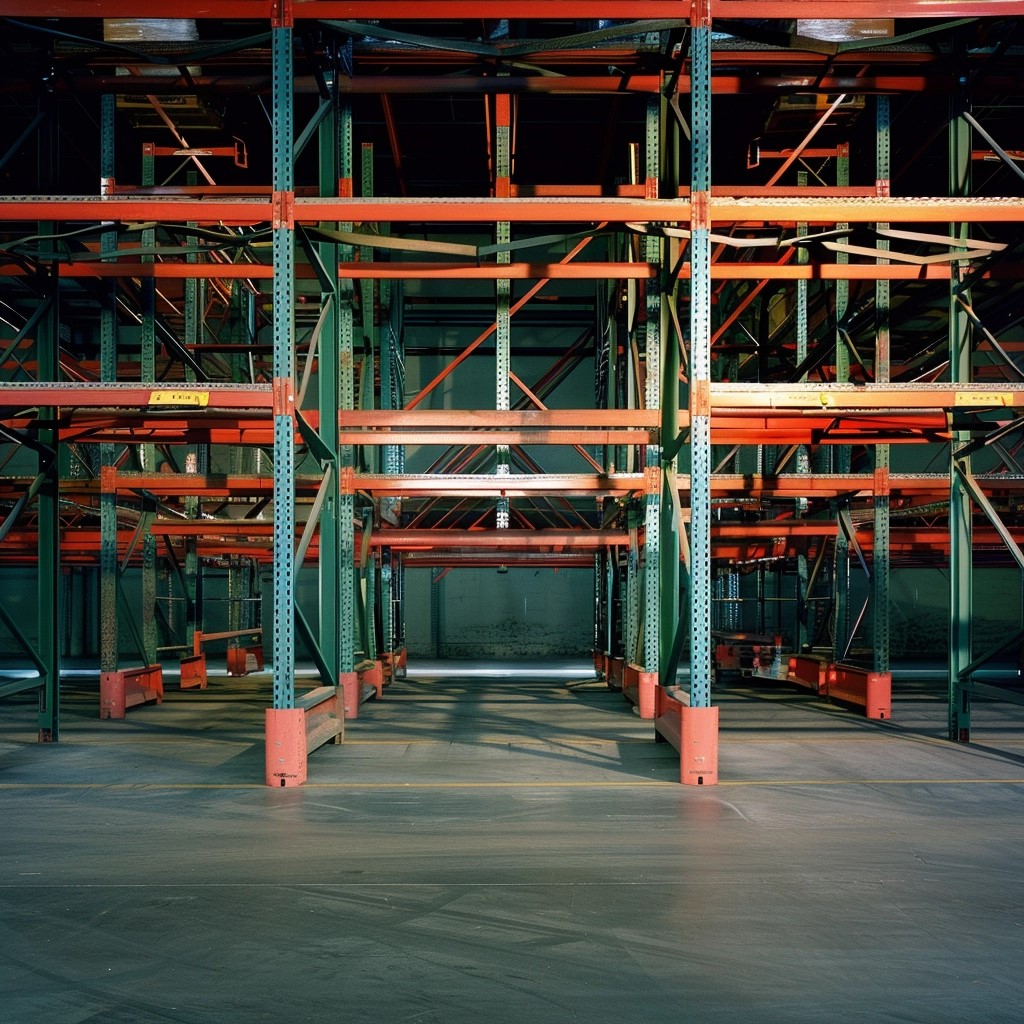
The overturning of pallet racks is a crucial concern in warehouse safety.
The Rack Manufacturers Institute (RMI) ANSI MH16.1 sets standards for this, notably the 6:1 and 8:1 overturning ratios. These ratios indicate how stable a rack should be during regular use.
However, seismic events add another layer of risk. Neglecting these factors can lead to serious consequences.
This article will explore these ratios, compliance with codes, and the necessary calculations for ensuring rack safety during seismic events.
By the end, you’ll be able to boost the safety and efficiency of your storage systems with confidence—and have peace of mind knowing that your warehouse is optimized to withstand challenges, reduce risk, and protect your valuable assets.
Understanding Overturning Ratios
A common misunderstanding about the ratios is that they are a ratio of the height of the frame to the depth of the frame, but that is incorrect.
The ratio is the height of the highest loaded beam to the depth of the frame. So, if your 42” deep frame is 240” tall, but the highest loaded beam is 120”, the ratio used is 120:42 (or 2.9:1).
The 6:1 ratio is a threshold set by ANSI MH16.1. When exceeded, the base plate and anchors must be designed for an additional 350# lateral load applied at the highest loaded beam.
This is to replicate the impact of a forklift on the top beam. Basically, the code indicates that, at a height exceeding 6:1, the frame is at a high risk of overturning due to the impact of a forklift.
The 8:1 ratio is also set by ANSI MH16.1, but it is more of a warning than a requirement. When exceeded, the code indicates that the frame may be unstable during use.
The code says that, if an engineer has designed the system properly then no additional measures are required, but still suggests tying the frame to another rack or an external structure.
Other Overturning
Seismic events pose additional challenges. ANSI MH16.1 requires racks to be checked for overturning when shelves are loaded to 67% capacity and when the top shelf is fully loaded.
These two loading scenarios are used in the seismic uplift load combination in ANSI MH16.1.
Only base plates and anchors are required to resist these overturning forces.
Other members in the rack system (columns, braces, connections, beams, etc.) are designed to resist seismic force from other load combinations but are not required in these overturning checks.
Applications of Overturning
These overturning can affect your project significantly, so understanding them can make a difference in the most efficient way to address them.
For example, if the 6:1 check ends up requiring custom base plates and larger anchors that will break your bottom line, you may want to explore other options. It’s all about changing that top-beam-to-frame-depth ratio; adjusting the load on the rack doesn’t do anything here. Here are two options that could get you out of a bind:
1. Make your frame deeper. This may not always be an option, but not only does it help the anchor and base plates since the frame is deeper, but a deeper frame may relieve the requirement of the 6:1 check altogether.
2. Lower your top loaded beam. This may seem like an unacceptable option because you feel like you’re not meeting the project requirements. But if the top beam is at 253” on your 42” deep frame, and all you have to do to relieve the 6:1 check is drop that beam 1” to 252”, then it’s probably worth exploring.
The 8:1 ratio may affect your project materials even more than the 6:1 check. You may need to add cross-aisle ties at every frame that exceeds this ratio. If that isn’t something that’s possible, then the code suggests tying to a structure externally. This would beam a nearby wall, mezzanine, etc. If these are existing structures, then you’ll need to coordinate with the engineer of those structures. If that’s not possible, then you may need to build an external structure of your own.
If the 8:1 ratio is neglected (after all, it is just a suggestion by the code), then you may find that the rack sways a bit more than anticipated during use. It’s always best to discuss this possible issue with the customer so you’re not having to do it later. The overturning due to seismic forces can be addressed in ways similar to addressing the other overturning checks, but the load on the rack greatly affects the design. Below are a few options to consider:
1. Lower the weight on your top shelf. This will affect the overturning, especially if the 100% top shelf loaded scenario governs. This will have less of an impact on the 67% loaded condition, but still affects it considerably as it will bring the height of the resultant seismic force lower, reducing the moment causing overturning.
2. Reduce the load on all of your shelves, starting with the top shelf and moving down. As indicated in point 1, reducing the load higher on the rack lowers the height of the resultant seismic force, which is a good thing. Also, though, the weight on the rack helps resist overturning. So, it’s a bit of a double-edged sword.
However, retaining weight on the lower levels can help resist overturning without significantly contributing to the moment that causes overturning. It’s possible that reducing the load on your lower shelves might actually increase the risk of overturning!
OneRack Checks Overturning Automatically
When using OneRack, you don’t need to remember to check these overturning cases.
OneRack does them automatically.
Appropriate calculations and/or warnings occur when these overturning ratios are exceeded!
It’s free to try right now. You can check it out below:
Try OneRack’s Pro Version, Completely Free
Get a 30-day free trial and start creating approved rack prelims within minutes.
